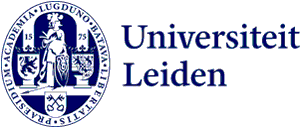
Hanneke Hulst discusses blind spots and the importance of collaboration
In her inaugural lecture, Professor of Neuropsychology Hanneke Hulst explained how she is trying to bridge the gap between science and health care. ‘For a neuroscientist to actually contribute to solutions for patients, you have to work across disciplines.’
Hulst previously researched cognitive rehabilitation in people with the brain disease multiple sclerosis (MS). ‘The main question was: can you influence the brain network through cognitive training?’ She indeed saw changes on brain scans, with altered connectivity after training. ‘I was super excited and submitted my findings to a doctor. They said: “It’s nice that you see this, but is the patient’s daily life actually improving?”’

That was a moment when Hulst had to acknowledge her own blind spot. Looking back, she is frustrated that she failed to include the patient’s experience directly in the design of her MS research. ‘This is basically a consequence of how we are trained as researchers: highly focused on one subject. But one wonders whether zooming in on the brain, as I did, is not too one-sided. There’s a person behind that brain, someone with emotions, a social environment and cognitions. All those factors ultimately determine how that person will fare.’
Interdisciplinary collaboration
If you want to do it well, it is important to work with people from different disciplines, Hulst says. ‘Simply because you see more together than you do alone.’ Together with researchers and clinicians from LUMC, she recently submitted a proposal to look at how patients with different conditions experience the same symptoms. ‘For example, fatigue is a symptom you see in many chronic diseases. Fatigue is a big problem for people with MS, but also for people who have had brain trauma or suffer from myasthenia (a chronic muscle disease). To understand why this occurs in all these patient groups, you have to work together and rely on each other’s expertise. We each contribute a unique bit of knowledge, and by combining it and relating it to an urgent problem, we make the (new) whole greater than the sum of its parts. At least, that’s my dream.’
‘Supervisors need to recognise its importance and learn to look at it through a different lens.’
Hulst works hard to make sure researchers are given the space to work together interdisciplinarily, including in her work as Recognition and Rewards project leader. ‘It’s nice that interdisciplinarity is part of the university’s strategic plan, but that is not enough. The policy has yet to be translated to the workplace. Supervisors need to recognise its importance and learn to look at it through a different lens. In Performance and Development Interviews, it can help to let go of quantity and look at what a researcher is working on. Researchers should be given time to build collaborations, get to know people from other disciplines and delve into new subject matter.’
Education
More attention should also be paid to interdisciplinarity in education. Hulst: ‘Education is now mainly geared towards specialisation. Students start with a broad scope in the bachelor’s programme, and then we ask them to specialise during their master’s programme. As a result, we don’t always learn to take a broader view.’
She says it would be good to also offer an interdisciplinary subject in each specialisation track. Even if people later decide to work as specialists, a broad view can help them better understand how their particular area fits into the bigger story. ‘I think that enriches everyone. In the coming years, I see it as my task to champion interdisciplinary thinking and working and inspire people to do it. It has made me a better scientist.’
Hanneke Hulst’s inaugural lecture can be followed via the livestream from 16.00 on 17 March.
